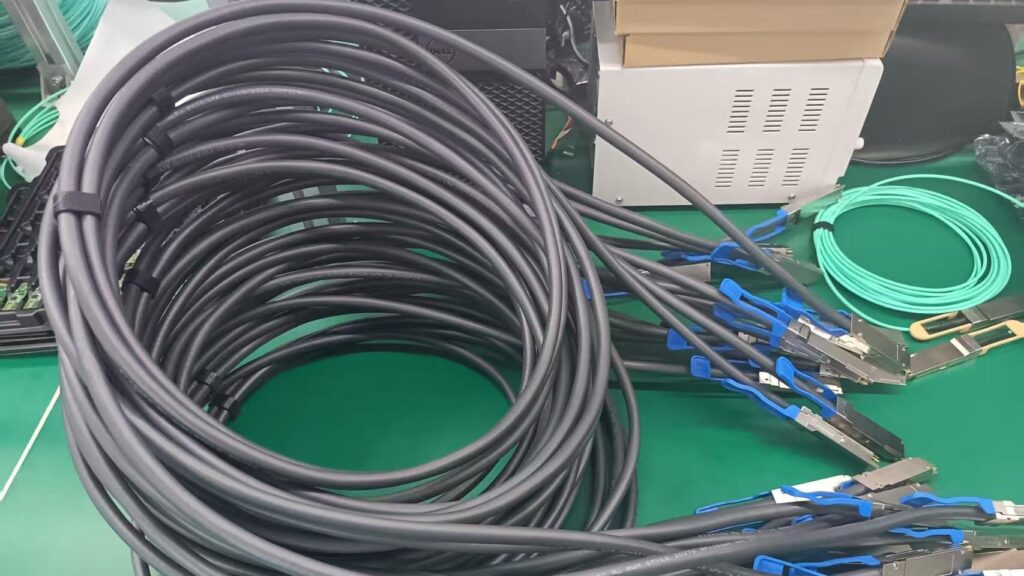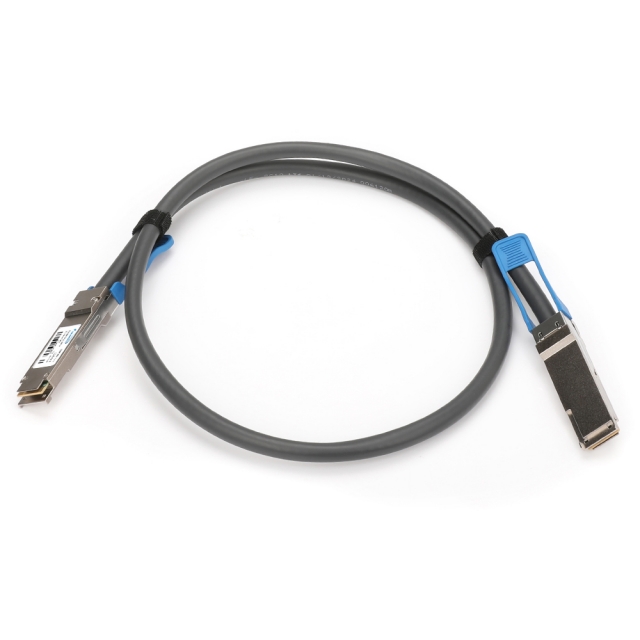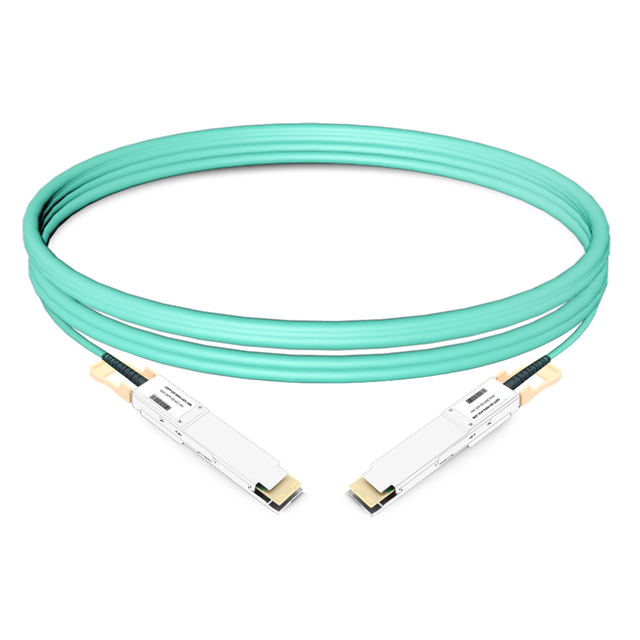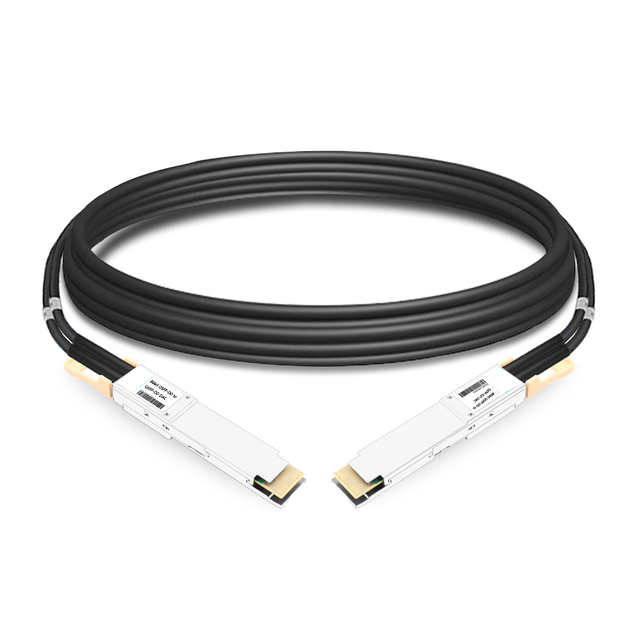The Advantages and Applications of 200G Ethernet DAC/AOC Cables
As data‑center operators push for ever higher densities and speeds, 200 Gigabit Ethernet interconnects have become integral to modern network fabrics. Fibrecross’s 200G Ethernet cables, including Direct Attach Copper (DAC) and Active Optical Cables (AOC), offer high-performance, low-latency solutions for data centers, HPC clusters, and telecom applications. Both types support full-bandwidth 200 Gbps links—each optimized for different reach, cost, and performance requirements.

What Are 200G Ethernet DAC and AOC Cables?
Passive Direct Attach Copper (DAC)
DAC cables integrate twinax copper wiring with SFP-style connectors at each end, delivering a direct electrical connection between ports without requiring separate transceiver modules. For 200G, the QSFP56 DAC assemblies typically span up to 5 meters, making them ideal for ultra-short in-rack links.
Key Features:
Reach: 0.3 m to 5 m
Power Consumption: < 1W per end
Latency: Ultra-low latency (< 100 ns RTT)
Cost-Effective: With no optics required, DAC cables are the most affordable option for short-range connections.
Active Optical Cables (AOC)
AOCs, by contrast, contain embedded transceiver electronics and fiber channels within a single, factory-terminated assembly. At 200 Gbps, QSFP56 AOCs can reliably carry signals up to 100 meters over multimode fiber, making them suitable for longer-distance interconnections in high-performance networks.
Key Features:
Reach: 3 m to 100 m
Power Consumption: ~ 4W per end
Latency: ~ 200 ns RTT
EMI Immunity: Fiber construction ensures immunity to electromagnetic interference (EMI), ideal for noisy environments.
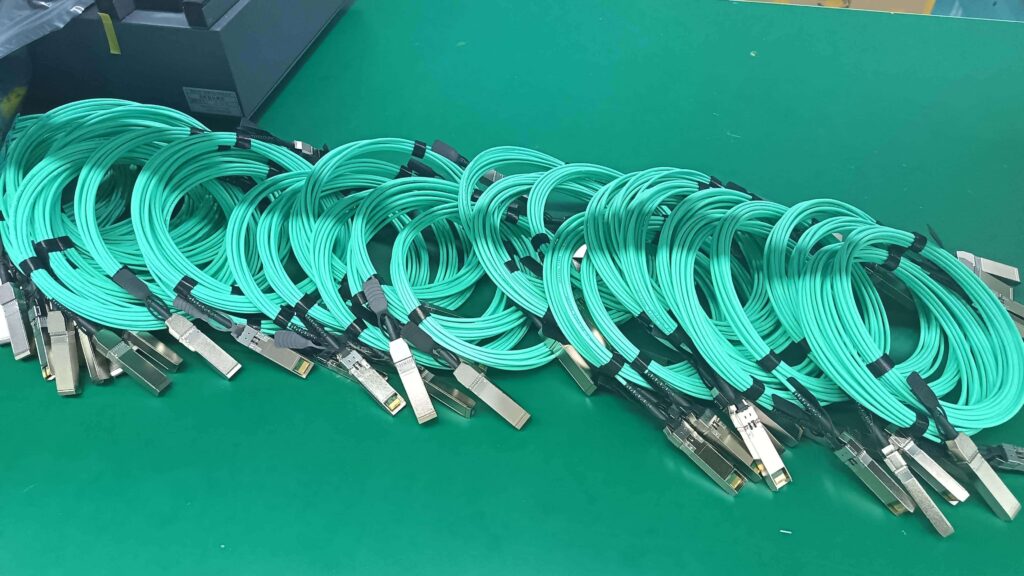
Key Advantages of 200G Ethernet DAC and AOC Cables
| Feature | 200G QSFP56 DAC Cable | 200G QSFP56 AOC Cable |
|---|---|---|
| Reach | Up to 5 meters (0.3m to 5m) | Up to 100 meters (3m to 100m) |
| Power Consumption | < 2W per end | ~ 4W per end |
| Latency | Ultra-low latency (< 100ns RTT) | Moderate latency (~200ns RTT) |
| Cost | Most cost-effective for short-range links | Higher cost for extended reach |
| Flexibility | Less flexible, suitable for short distances | More flexible, ideal for longer distances |
| EMI Immunity | No | Yes |
| Deployment Simplicity | Plug-and-play, no optics required | Plug-and-play, with integrated optics |
| Best Use Case | In-rack, Top-of-Rack (ToR) connections | Inter-rack, Spine links, longer-distance links |
| Environmental Suitability | Best for dense racks with limited space | Suitable for environments with electrical noise |
Typical Deployment Scenarios
In‑Rack and Top‑of‑Rack Switch Connections
For connections within the same rack (≤ 5 m), DAC cables deliver maximum cost efficiency and density. AOCs, due to their higher per-link cost, are seldom used in this scenario. However, their use is recommended when connecting over slightly longer distances or in high-density setups where low EMI is crucial.
High‑Performance Computing (HPC) Clusters
In HPC and AI environments, where data-intensive tasks demand ultra-low latency and high-bandwidth links between racks, 200G AOCs are the ideal solution. These cables extend reach up to 100 meters and offer the necessary bandwidth without sacrificing power efficiency.
Spine‑Leaf and Switch‑to‑Switch Links
In large-scale leaf-spine networks, AOCs offer a cost-effective and reliable way to connect switches and servers across racks, thanks to their low latency, extended reach, and EMI immunity. The long-distance capabilities of AOCs are invaluable in interconnecting multiple racks in spine-leaf architectures.
Telecom and Metro Network Edge
Service-provider Points of Presence (PoPs) and metro-edge nodes require interconnection over fiber-rich environments. AOCs provide flexibility, simple plug-and-play installation, and excellent performance over longer distances (up to 100 meters), making them suitable for metro-edge networks.
Side‑by‑Side Comparison
| Feature | 200G QSFP56 DAC cable | 200G QSFP56 AOC cable | 200G QSFP‑DD DAC cable | 200G QSFP‑DD AOC cable |
|---|---|---|---|---|
| Maximum Reach | ~5 meters | Up to 100 meters | up to 5 m | up to 100 m |
| Power Consumption | < 2W per end | ~4W per end | < 2W per end | ~4W per end |
| Latency | Lowest (<100 ns RTT) | Moderate (~200 ns RTT) | Lowest (<100 ns RTT) | Moderate (~200 ns RTT) |
| EMI Immunity | No | Yes | No | Yes |
| Cable Bulk | Thick, less flexible | Slim, highly flexible | Thick, less flexible | Slim, highly flexible |
| Cost per Link | Lowest | Higher | Lowest | Higher |
| Typical Use Case | In‑rack, ToR connections | Inter‑rack, Spine links | In‑rack, ToR connections | Inter‑rack, Spine links |
Best Practices for Selection and Installation
-
Match Reach Requirements
Choose DAC for ≤ 5 m; select AOC if you need 10 m–100 m links. -
Consider Power Budgets
For ultra‑dense racks, DAC’s sub‑2 W profile eases cooling loads. -
Plan Cable Management
Factor in bend radii: fiber-based AOC cables tolerate tighter bends than twinax. -
Verify End‑Host Compatibility
Confirm QSFP56/QSFP28 port support and vendor‑validated compatibility lists. -
Test Before Deployment
Pre‑test each assembly’s Bit Error Rate (BER) and throughput in a lab to ensure link integrity.
Conclusion
200G Ethernet DAC and AOC cables offer high-speed, low-latency solutions for a range of modern data-center and enterprise networks. DAC cables are an affordable, power-efficient solution for ultra-short links, while AOC cables extend reach and provide EMI immunity for inter-rack and long-distance deployments. By aligning cable choice to application—whether in-rack versus inter-rack, short-range versus long-range, or cost constraints versus performance needs—network architects can maximize performance, density, and total cost of ownership at 200Gbps scale.

